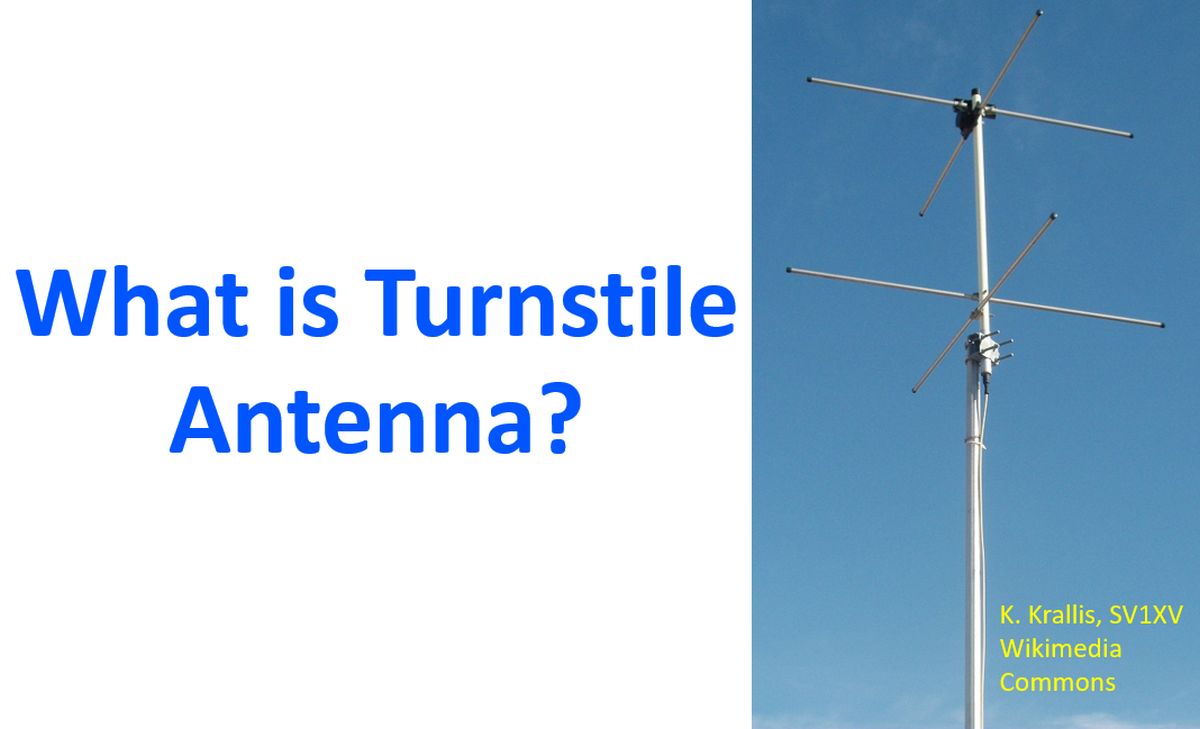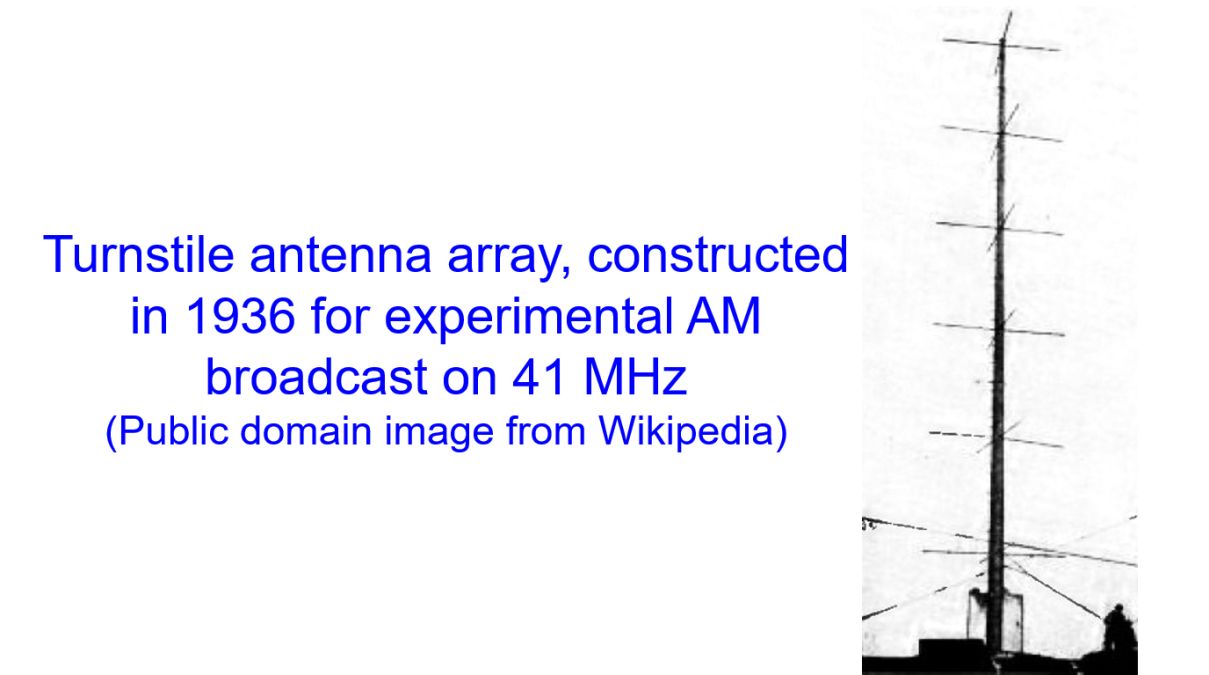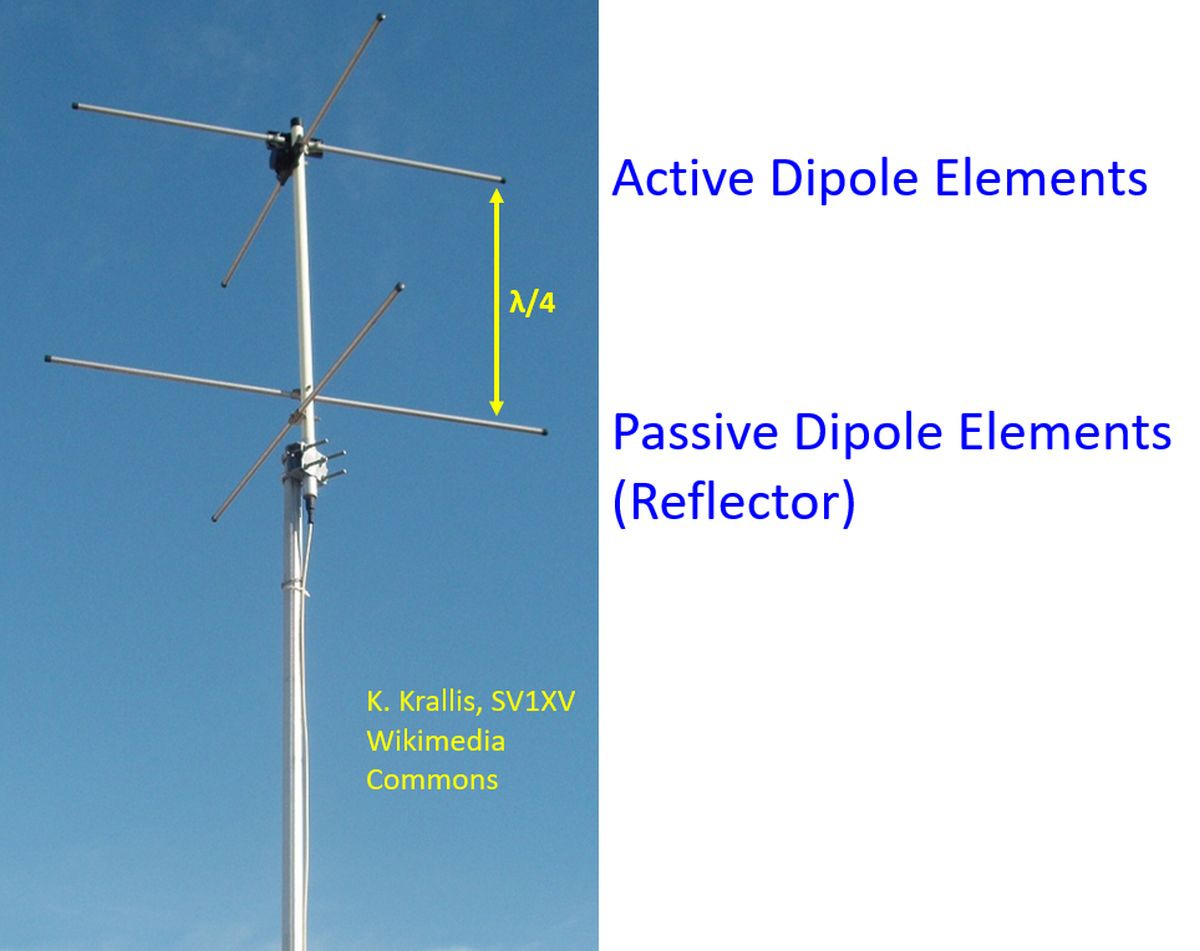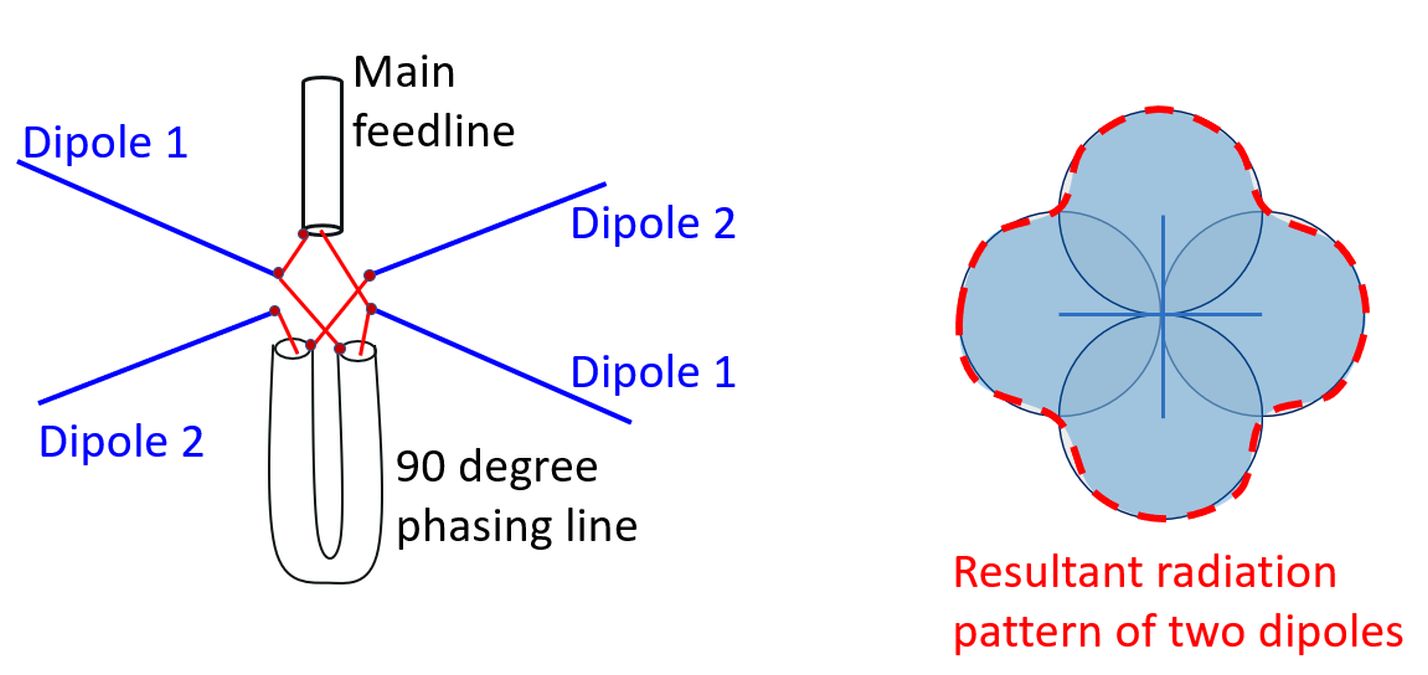What is Turnstile Antenna?
What is Turnstile Antenna?
Turnstile antenna is also known as crossed-dipole antenna as it consists of two identical dipole antennas mounted at right angles to each other. Currents fed to the dipoles are 90 degrees out of phase. Just like the helical antenna, turnstile antenna can have a normal mode in which it radiates horizontally polarized electromagnetic waves perpendicular to its axis and an axial mode in which it radiates circularly polarized electromagnetic waves along its axis. Circularly polarized antennas are useful for satellite work in VHF and UHF bands. It may be noted that the satellite tumbles and spins in orbit so that the orientation of its antenna changes during a pass. An antenna with circular polarization will not be sensitive to the orientation of the satellite antenna in space. A horizontally or vertically polarized antenna like a usual dipole or monopole will not be able to receive the weak satellite signals when the satellite antenna is oriented the other way round.

While operating in the normal mode, the radiation patterns of two horizontally polarized dipoles produce an almost omnidirectional radiation in the horizontal plane. If several turnstile antennas are stacked vertically, the gain in the horizontal plane can be enhanced while reducing the radiation in the vertical direction. This is an obvious advantage in case of antennas used for television transmission. That can also be used as omnidirectional antennas for VHF and UHF transmission in amateur radio, when one is not planning to work satellites. When turnstile elements are stacked, they are separted by half wavelength and the corresponding elements are fed in phase.

In axial mode radiation on one end is right hand circularly polarized and that on other end left hand circularly polarized, determined by the phase of the feed connections. Turnstile antennas in axial mode can be made more directional by adding a reflector to prevent radiation to one side. A simple reflector is a passive set of crossed dipoles as seen in the antenna by SV1XV. Reflected waves will be 180 degrees out of phase and reflection reverses the polarization. Hence they can reinforce the forward radiation. For this the reflector is placed at quarter wavelength behind the active elements so that the direct and reflected waves are in phase and add on. This provides a gain of 3 dB.

The two dipoles in a turnstile antenna are fed with signals which are 90 degrees out of phase to each other. This is known as a quadrature feed. It may be noted that 90 degrees is one fourth of a sine wave cycle which is 360 degrees. Two figure of eight radiation patterns of two dipoles when combined, appears like a clover leaf pattern which is almost circular. Phasing line is typically a quarter wavelength coaxial cable.
